
Australia is believed to be a country that has the most restrictive immigration control regime in the world. Canberra wielded the sceptre of power through the “Pacific Solution” which licensed the Australian military to capture aliens before landing and relocating them in widespread offshore detention facilities.
Canberra still holds the demonic crown of being an exceptionally intolerant state for migrants. It retains the title courtesy of private contractors — overseeing all the operations of the Australian offshore detention facilities — in addition to applying taxing detention measures and collaborating closely with other regional countries to boost their incarceration capabilities.
Over seven years since the introduction of the controversial offshore processing policy in August 2012 to July 2019, Canberra shipped more than 4,000 refugees and asylum seekers, defined as “illegal maritime arrivals”, to remote islands in the Pacific, Nauru and Port Moresby, the capital of Papua New Guinea.
Notwithstanding New Zealand’s offers to take some refugees since 2013, Australia has denied accepting the proposal. The Trans-Tasman relationship has plunged in years after deportation of New Zealanders including a 15-year-old boy under the callous Australian Section 501, urging the infuriated Green Party to call its neighbour a ‘rogue nation’ that should be complained about to the UN.
As of February 28, 2021, some 240 transitory persons on the two islands are in limbo amid worse-than-jail conditions and poor access to health while being treated brutally and tortured physically, mentally, emotionally and spiritually. The horrors of which have been termed as “the architecture of evil” by a former detainee.
In January, authorities freed some of the migrants, routinely smuggled to the “luxury torture cells” by sea with electricity cut off, water tanks deliberately spoiled and medicine and food shortage. But the release took roughly 18 months during which the detainees were kept in abandoned hotels in Australia without sufficient meals, open space and medical assistance.
The abomination for the refugees was earlier described in a leaked Donald Trump phone call to Malcolm Turnbull published by The Washington Post in August 2017. Then Aussie prime minister admitted to the former US president that they were not “bad people” but were kept in such conditions because he wanted to teach illegal migrants a hard lesson.
Mostafa Azimitabar is one of the lucky asylum seekers who got freedom after eight years of being locked up in a detention centre that he said was “brutal: a place of privation, of systemic debasement, of great and terrifying violence”. Azimitabar was fortunate to survive while his friend was killed by up to 15 detention centre employees by a wooden post spiked with nails and a rock dropped on his head.
It is not just refugees and asylum seekers that are vulnerable to the Australian deadly rage; there are a significant number of Indigenous Australians — Aboriginal and Torres Strait Islander people — who continue to be the victims of the racial injustice and discriminatory practices.
A Social Justice and Native Title report in 2014 revealed shocking Indigenous incarceration facts in Australia. The study found that the Indigenous Australians were likely to be imprisoned or detained in juvenile detention by 15-24% more than those of non-Indigenous adults or adolescents.
The over-representation of Indigenous Australians in prison hasn’t changed much as they still have a high rate of deaths in custody and comprise 29% of the country’s adult prison population. Incarceration disproportionately is impacting children too, making their arrest 21 times more likely than non-Indigenous teens.
Last year’s report by the Queensland Health Ombudsman following an investigation of the killing of a six-year-old child over gross negligence, exposed stark health disparity between Indigenous and non-Indigenous Australians and raised serious doubts on the sincerity of the government to address health issues of the Aboriginal and Torres Strait Islanders.
Resolving wider Indigenous issues seems to have never been an Australian priority. The 12th Closing the Gap report showed Canberra was way off track to meeting five of its seven key objectives with little or no improvement, thereby exposing the government’s nefarious approach to rise to the challenge.
The scheme in July 2020 was dubbed as a failure “to partner with Indigenous people to develop and deliver the 2008 targets” by Aussie Prime Minister Scott Morrison as he completely reset the objectives and expanded the scale of the plan to 15 goals in a bid to tackle Indigenous hardship.
But with the Victorian Aboriginal Affairs Framework confessed Aboriginal over-representation in criminal justice and the Royal Commission into Aboriginal Deaths in Custody inextricably linked high rates of Indigenous deaths in custody with underlying factors of poor health and housing, low employment and education levels and government policies, the Morris government should coherently and scrupulously implement his strategy to ease up the fears and anxieties of the downtrodden community.
Quite a few voices erupted within Australia last year when many nations and international leaders denounced George Floyd’s death in the United States and left Indigenous families wondering why the global community was tight-lipped on Australian cruelty. Indigenous Australians surely deserve at least an even support from the world as they are just 3% of the Aussie population and account for 30% of the country’s inmates.
Decrying Canberra’s treatment of asylum seekers, use of offshore processing and prolonged detention of refugees and high incarceration rates of First Nations people, more than 40 member states during the UN Universal Periodic Review in January also raised concerns on the Australian government’s failure to reduce significant over-representation of Indigenous Australians in the criminal justice system.
While there are hundreds of other people experiencing inhumane Australian conduct in offshore detention centres and the Morrison administration’s draconian behaviour against Indigenous Australians hasn’t altered either, Canberra can no more hoodwink the world on its human rights abuses. It has to obliterate the “walls of oppression” built around refugees and Aboriginal and Torres Strait Islanders.
Published in The Express Tribune, March 30th, 2021.
Like Opinion & Editorial on Facebook, follow @ETOpEd on Twitter to receive all updates on all our daily pieces.















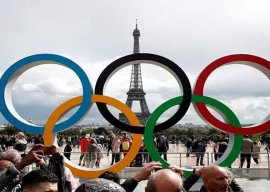
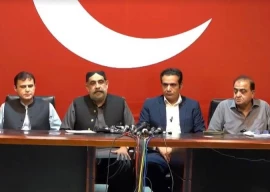

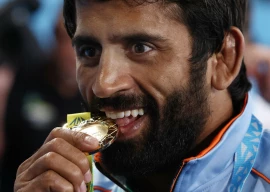








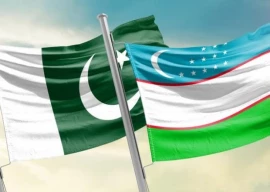

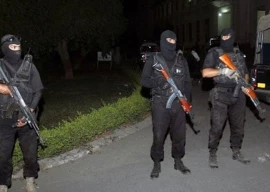

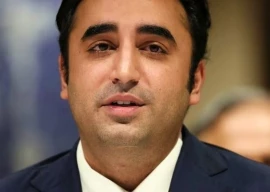

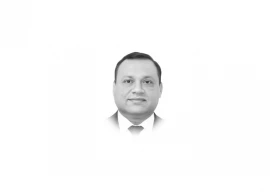





COMMENTS
Comments are moderated and generally will be posted if they are on-topic and not abusive.
For more information, please see our Comments FAQ